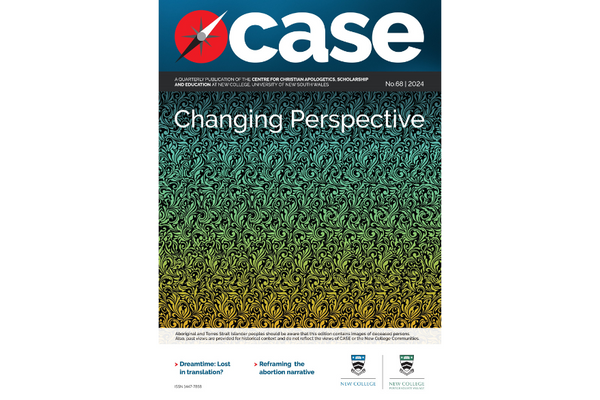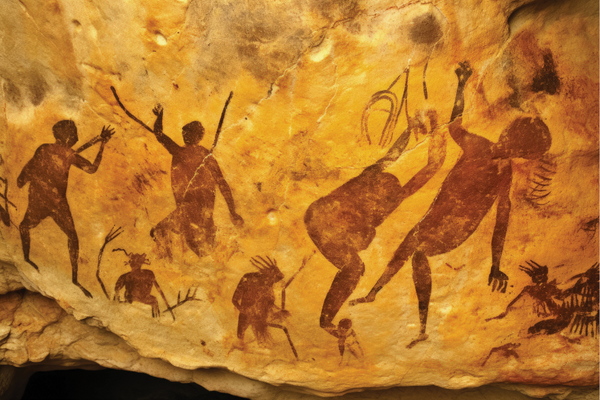Book Review: The Early Text of the New Testament

Christians have long cared about the exact wording of the texts that are of greatest importance to them, the texts in the Bible. This applies to both the Old Testament and the New Testament, but in the case of the New Testament there is a vast amount of material to apply that care to. There are many thousands of manuscripts, from the second century to the invention of the printing press, that preserve some or all of the texts that make up the New Testament (NT). They are in several languages, all containing slight differences in wording. By comparing variants and developing hypotheses about the direction of change, textual critics attempt to work out the original wording of the texts.
However, the evidence is not evenly distributed throughout these 13 centuries. The bulk of the material is from the medieval period. Perhaps the most important single manuscript for the modern study of the text of the NT is Codex Vaticanus, one of our oldest copies of (almost) the whole Bible in Greek, which was written probably some time in the fourth century. Before this there's (comparatively) less textual evidence. However, in general text-critical terms there is still a lot: about 130 Greek manuscripts, mostly fragments of papyrus codices. These manuscripts are obviously of considerable interest to text critics for their witness to the early text2 of the books that came to make up the New Testament.
In addition to the manuscripts, quotations from the NT in the Church Fathers can in principle provide some insight into the early text. Writers of the second century like Justin Martyr, Irenaeus, and others clearly made use of the gospels and letters that went into the NT, and it is conceivable that they have preserved information about the wording available to them.
The Early Text of the New Testament aims to lay out this pre-fourth century evidence, and to consider how it addresses the sorts of questions that can be and have been raised about the first few hundred years of the transmission of the texts that make up the New Testament: Did the text develop in this early period? Was there greater freedom in copying the text at first, compared to a more fixed tradition later? Were second-century scribes apparently more or less careful than later scribes?
According to Hill and Kruger’s introduction, there have been some exaggerated claims in NT text-critical circles about the lack of stability in the early text of the NT books. In particular, it has been claimed that it wasn’t until around the fourth century that some sort of reliability attached to both the text to be copied and the process of reproducing it. In part this book undermines that claim, and suggests that in fact the early text was more stable, and scribes less free in reproduction, than it allows.
On the whole, the sort of scribal variation under consideration here most people would find relatively trivial— features like word order and the tenses of verbs constitute the bulk of the data being examined. Often the variants seem less significant than the differences between similar English translations.
There are a number of cases where there are more substantial differences among manuscripts, but these are mostly not given any special treatment in this book—for the purposes of textual criticism, all variants are interesting, however trivial. They can all contribute to a case for determining the relationships among manuscripts, which in turn is useful for determining the ‘best’ reading, or evaluating scribal habits.
The book is a collection, each chapter written by a different scholar. The first section, the most readily accessible to the non-specialist, comprises four essays on aspects of the cultural context in which these early manuscripts have to be interpreted. There is a discussion of the book trade in late antiquity, concluding that while there were commercial publishing channels,it is most likely that Christians at this time would have relied on the more informal (and probably more prevalent) method of individuals sharing texts for the purpose of making copies. The second essay detects a common format among some Gospel manuscripts, and argues that this characteristic is evidence that these copies were intended for public use; it goes on to suggest that this ‘standardisation’ may reflect a prevalent catholicity, undermining a common view today that in this early period it is anachronistic to speak of a dominant form of orthodox Christianity.
The third essay, to my mind one of the most interesting in the book, is an analysis of typical early manuscripts of the ‘public’ kind in terms of what their format might indicate about attitudes to reading in the communities that used them. ‘Democratising’ features of the handwriting and punctuation are consistent with the idea that early Christians encouraged a broad participation in the ‘scriptural life’ of their communities, which is in turn consistent with the evidence that those communities were largely made up of people from a broad swathe of ‘middle society’, but generally excluding the very poor and the very rich.3 The final essay in this first section examines explicit evidence of early Christians’ attitudes towards the reproduction of the texts that became the New Testament, and concludes that both what the author calls ‘the Deuteronomy 4:2 principle’— neither to add nor to take away—and a tendency to ‘correct’ the text are evident, and that, ironically enough, it seems the latter is actually a consequence of the significance implied by the former. A common refrain through these chapters is that claims of freedom in copying these texts have been exaggerated. While it seems to be true that there is more mixing of variants in these early manuscripts compared to later ones, the evidence suggests that the scribes were still on the whole concerned to reproduce as faithfully as possible the texts they were copying.4 Also undermined somewhat is a traditional principle that in comparing readings, the shorter should be preferred as original. In comparison to the standard reconstructed text of the Greek NT, early scribes apparently tended to leave out more words than they added, on the whole.antiquity to quote rather loosely, there are chapters covering the text of the New Testament in the Apostolic Fathers,Marcion, Justin Martyr, Tatian, the extant early apocryphal gospels, Irenaeus, and Clement of Alexandria. For the most part the conclusions of these chapters are consonant with the introductory piece, albeit more muted. Generally, though not universally, they are rather pessimistic about the value of the relevant quotations even for suggesting likely variants in the sources available to the respective writers.5 This is not a book to be tackled lightly.
The second section, the core of the book, considers the early textual evidence for the various parts of the New Testament in detail. Each Gospel is dealt with individually, as well as Acts, the letters of Paul (including Hebrews), the Catholic epistles (those not written by Paul), and Revelation. Individual authors address specifically the evidence for, and the nature of, the early text of that book or section—that is, the text before the whole-Bible manuscripts of the fourth and fifth centuries. This varies from 20 manuscripts containing one or more of Paul’s letters and Hebrews, 17 containing portions of John, and 15 with portions of Matthew, to just two manuscripts containing Acts, and only one manuscript of Mark confidently dated before Vaticanus.
A final chapter in this section considers the value of translations of the NT texts into other languages for determining the early form of the various texts, and focuses especially on the difficulty of using this evidence for establishing textual variants in the Greek originals of these translations. The conclusion might be paraphrased that in this regard many details are gained in translation!
The final section consists of a larger group of essays examining quotations of NT texts in other writers of the period. After an initial essay sounding a rather loud note of caution regarding the value of these quotations for text- critical work, primarily because of the tendency in Greek is not translated, nor are quotations in Latin, German, or French, though (usually) Syriac, Coptic, and Armenian are. The reader is assumed to be familiar with the apparatus of the Nestle-Aland edition of the Greek New Testament. A few chapters are very data intensive (tables and lists comprise more than half of the chapter on quotations in Irenaeus, for example), while many are more discursive. To some extent, of course, this depends on the sort of data available for the question under consideration.
I found the book both fascinating and enlightening, although I confess I am only an amateur in the area. I have a couple of frustrations. The sense that in certain theoretical respects the discipline is in a state of flux leads me to suspect that this book, though valuable, is by no means the final word on the subject, despite the level of detail. There is a lack of methodological consistency and transparency, and the basis for the authors’ judgments is often not elaborated.6 Sometimes a reference to other work is provided, which is appreciated, but at other times one wonders how intersubjectively valid the judgments are, and whether various known cognitive biases might not be affecting the outcomes.7 Providing all the underlying evidence would ameliorate this—though,of course, there are space constraints.
But these frustrations are a normal part of engaging with an impressive scholarly work such as this. The book will without doubt count as an important reference work on the early text of the New Testament. Its clear organisation and considerable amount of more and less digested data will prove useful to those looking in depth at the earliest witnesses to the text. And for the doughty non-professional it can provide a very helpful context for some recent more popular books on textual criticism of the New Testament,8 that sometimes perhaps imply greater uncertainty than is warranted. It will definitely guide my reading in the area for a long time to come.
ENDNOTES
1 ‘Text’ refers to the wording of a book, whether of a particular copy or of a reconstruction. In a somewhat loose sense it can also be used collectively of the texts of a collection of books, as in the title of the book under review.
2 On the social make-up of Christian communities see E. A. Judge, ‘The Social Identity of the First Christians: A Question of Method in Religious
History’. Journal of Religious History, Vol.11(2), 1980, pp201-217.
3 The same mixing of variants does mean that the standard text groupings—Alexandrian, Western, Byzantine, etc.—come in for some rough treatment when faced with some of this evidence, arguably supporting what seems to be a growing dissatisfaction with aspects of, or even the whole idea of, such groupings in the last decade or so.
4 It seems a little odd that this section stops at Clement of Alexandria. The decision seems to have been to include only writers from the second century, perhaps for reasons of space, but this means excluding Origen, whose own concern for text critical matters would surely make an overview of his use of the NT of interest for the subject of the volume.
6 Coming from a science background, I wonder whether computational and quantitative techniques, though presumably not absent behind the scenes, might not play a more overt, even if still ancillary, role in the analyses. As long as such techniques are applied with an understanding of their significance and limitations, they can provide a more refined basis for judgment that can be intersubjectively agreed upon, even if judgments still differ. Some explicit measure of uncertainty would not be amiss. What statistical data is supplied here is typically given as the results of vaguely described procedures, so that it is impossible to reproduce the analysis.
7 See, for example, Amos Tversky and Daniel Kahneman, ‘Judgment under Uncertainty: Heuristics and Biases’. Science, New Series, Vol.185 (4157), Sept. 27, 1974, pp1124-1131.
8 E.g., Bart Ehrman, Misquoting Jesus: The story behind who changed the Bible and why (San Francisco: Harper, 2005); D. C. Parker, The Living Text of the Gospels (Cambridge: CUP, 1997).
Leave a comment
Comments will be approved before showing up.



